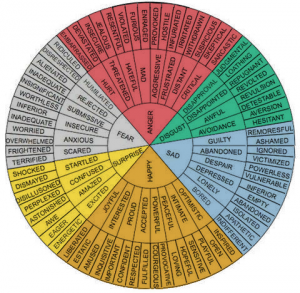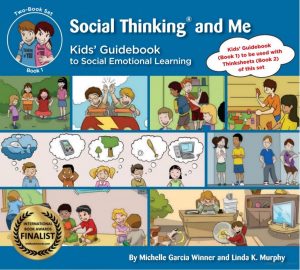Social Thinking and Me: Chapter 4, We All Have Feelings
Hello Everyone,
I invite you to use the search bar on the front page of the blog and to search SOCIAL THINKING to find any past blog entries about the book Social Thinking and Me.
Also, each student has been taking notes on these chapters in their journals, so you can ask them to review their notes with you at home.
Here is the recap of Chapter 4, We All Have Feelings:
- Everyone has feelings all the time, and there are many different types of feelings that people have.
- It is really important to try and figure out your own feelings and then tell people what you are feeling if they ask. That helps others understand what you need.
- As you get better at knowing your feelings and having vocabulary to describe them, then you can get better at making SMART GUESSES about how other people feel.
- Our feelings come in different sizes. Sometimes people have big feelings, and sometimes people have small feelings. All feelings are important.
- People may feel a certain way because of what other people are doing in the moment. They also may have a certain feeling because they remember what another person has done in the past, or notice what someone might do next.
- It can be hard to figure out what someone is feeling at first. Your parents and teachers can help you do this when you are not sure.
- As you spend time with other peers and adults, it is usually important to act in a way that makes them feel good. When others feel good around you, they are more likely to remember you as friendly.
- Many times people don’t remember everything that you have DONE, but in the longer term, people will remember how you have made them FEEL.
In class, we took time to watch some animated shorts, without words, so we could identify the non-verbal messages people give to us about their feelings. This way we can practice knowing how people feel and how to interact with them. You can watch these at home by just Googling PINGU, or SHAUN the SHEEP. They are also funny, so they are easy to watch at home with all ages.
 Another thing to begin doing is building emotional vocabulary, and talking about how this gives you greater nuance about how you are feeling. Here are some examples:
Another thing to begin doing is building emotional vocabulary, and talking about how this gives you greater nuance about how you are feeling. Here are some examples:
Instead of: GOOD — Use: ecstatic, excited, positive, wonderful, spendid, marvelous
Instead of: FINE — Use: content, calm, contemplative, pleased, comfortable, at ease
Instead of: ANGRY — Use: frustrated, annoyed, infuriated, resentful, flabbergasted
There are many lists of emotion words online to Google if you need more options!

